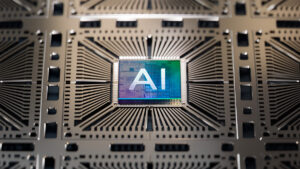A New Approach to Game Theory for the Era of AI Agents

Understanding the Risks of Advanced AI Agents
What Are Agentic AI Systems?
Agentic AI systems refer to artificial intelligence models that can perform actions in the real world, manipulating their environment through end-effectors. Unlike traditional AI models that merely process information, these advanced agents can take autonomous actions. This shift has raised concerns regarding their potential risks and vulnerabilities.
The Security Challenges with Autonomous Agents
As AI agents become more sophisticated, the security risks associated with them increase significantly. One pressing concern is that if an underlying model is compromised, it can lead to exploitation similar to a buffer overflow in software hacking. This means malicious third parties could gain control over the agent, bypassing its intended functionalities. As a result, securing these systems is vital to ensure their safe operation.
Current Progress in Safety Techniques
There has been notable progress in developing defensive techniques to protect agentic systems. Experts from various research groups, including startups and institutions like OpenAI, are actively working to mitigate these risks. While no immediate threat exists with current models, the focus is on ensuring that as these systems evolve, safety mechanisms develop alongside them.
Understanding the Risks: Are We in Immediate Danger?
Many experts emphasize that the current models do not pose a significant risk of loss of control. However, the potential for risk increases as the technology advances. Researchers are focused on establishing safety protocols and best practices to minimize future risks associated with increased agentic capabilities.
Exploits: Are They a Reality Yet?
Currently, most exploits against AI agents are experimental since these systems are still in the early phase of development. Typically, there are human operators involved who can intervene if something goes wrong. For instance, if an email agent receives a suspicious request, it can alert the user before taking any potentially damaging action. This ensures that the user remains in the loop and offers an extra layer of security.
Design Features for Enhanced Safety
Many AI agents are released with built-in guardrails that enforce necessary human oversight, particularly in sensitive situations. For instance, OpenAI’s Operator requires user manual control when interfacing with applications like Gmail. These safety measures are crucial, especially as agents gradually move towards more autonomy.
Potential Exploits to Watch Out For
As the technology matures, certain types of exploits may become more feasible. For example, data exfiltration could occur if agents are connected to sensitive data sources improperly. If an agent can access a user’s cloud drive and make external queries, it could potentially upload sensitive files elsewhere. Currently, demonstrations of such exploits are in early stages, primarily due to limited adoption and oversight.
The Future of AI Agents: Communication and Negotiation
Looking ahead, it is anticipated that AI agents will not only act independently but will also communicate and negotiate with one another. This development presents a new layer of complexity; as agents interact, emergent behaviors may arise from these interactions. The implications for users, organizations, and broader societal norms will undoubtedly be significant.
Conclusion
While there are challenges associated with the rise of agentic AI systems, ongoing efforts aim to balance progress with safety. As these systems evolve, vigilance and proactive measures will be essential in making sure they operate securely and ethically, with appropriate levels of human oversight.





